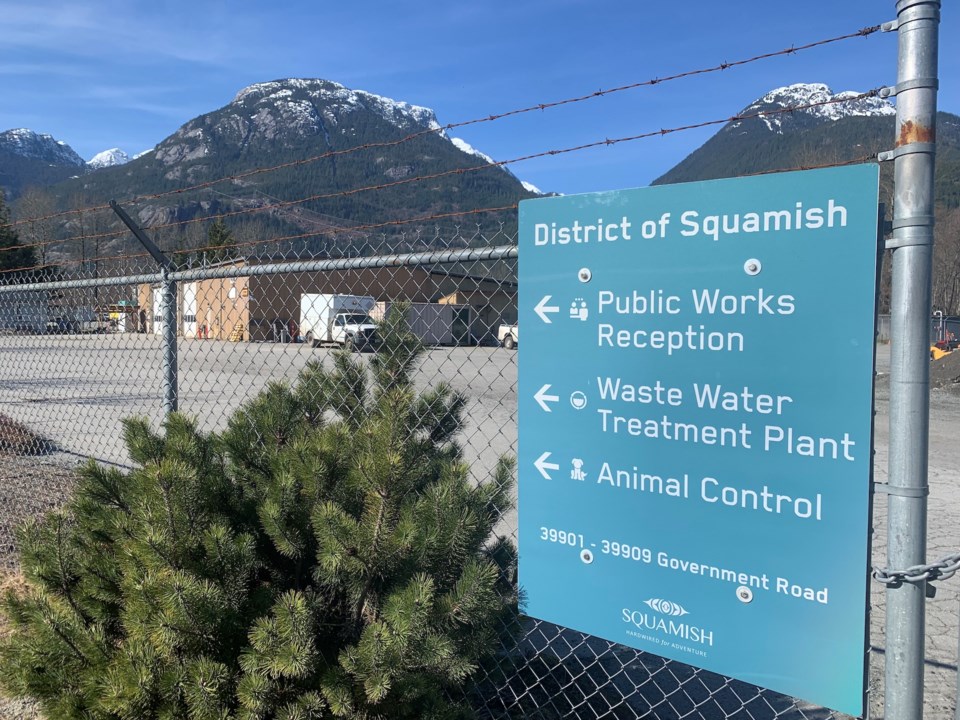It is all up to you.
If folks in Squamish don’t want the District to take out a loan to help pay for a new Public Works Yard, that is totally within their rights to decide.
Residents will soon have up to two chances to make their feelings known loud and clear.
There will soon be another Alternative Approval Process (AAP), and if that fails, a referendum will follow in October when we go to the polls for local government elections.
As everyone in town likely knows by now, it was announced on March 1 that the AAP seeking permission for a $16-million loan failed.
The number of “no” forms received (1,695) was more than 10% of the eligible voters. Thus, the proposed borrowing can’t go ahead.
Fair enough.
But there seemed to be some confusion last time, judging by what folks have told The Squamish Chief and by online comments. Some who voted no may have thought that it was possible to opt-out of this now over-$20-million Public Works Yard replacement.
That was not the case.
The District has been clear this project is going ahead, like it or not.
Replacement of the public works yard is deemed critical.
Is it? Well, it’s hard to argue that having the technology that operates our wastewater and drinking water systems out of the flood plain is not a necessary thing.
And drive by the facility — or go check it out at the open house on May 18 — and it is clear its best days are far behind it.
It is kind of embarrassing, to be frank, for a town of our wealth and size to have such a backwater-looking muni yard. (Yes, the Steampunk Tantalus Fire Hall looks worse — it is one of the other upgrades going ahead.)
The question then is: as a resident, are you comfortable with what will happen if the loan authorization for the Public Works upgrade fails again?
Maybe you are.
If the municipality has to raise the money through a one-year tax increase, a homeowner with a $1-million property, according to BC Assessments, would pay about $1,510. That figure would be $755 if the increase was spread over two years.
Those respective numbers would be $3,880 and $1,940 for business properties.
If the municipality takes the long-term borrowing proposed in the AAP, residential property owners with valuations of $1 million will pay $116 per year, and business property owners would pay $298.
Plenty of us sit down and look at our personal budgets and decide we will take a hit for the greater good. Helping our kids a bit more with university, for example, rather than having them take out a loan.
Not exactly the same thing, of course, but the point is when we do this personally, we are clear about what the consequences are.
We decide we want to pay more for something and accept that consequence.
From what we have heard, some folks thought voting down the AAP would mean that it would just not get built. Something else would get built in its place — something more satisfying for residents, like a rec centre with a nice big waterpark, perhaps?
The powers that be are and should question how such a misunderstanding came to be.
The District needs to be in overdrive, providing residents with clear and unbiased facts about this AAP so that voters understand the consequences. That is staff and council’s job.
Sure, there may have been a small group of folks with questionable motives who stirred the AAP pot last time, but the question is how there was a pot to stir.
In other words, weeds can’t take root in well-tended soil.
The AAP process was so routine. It passed year-in-and-year-out so often that it was taken for granted. That can’t happen again if the District wants to reach its stated goals.
This process, though tweaked over the years, is not unique to Squamish or new.
Munis have had to hold a vote to get elector approval for loan authorization bylaws since 1873.
Unlike the other option, assent voting (referendum), the AAP is a bit more resident-friendly in that folks have at least 30 days to express their opinion and submit their response forms – rather than being limited to appearing in person during a specific and limited voting day.
Conducting an AAP is less expensive than assent voting too.
But as long as each voter understands the consequences — you do you, Squamish.



